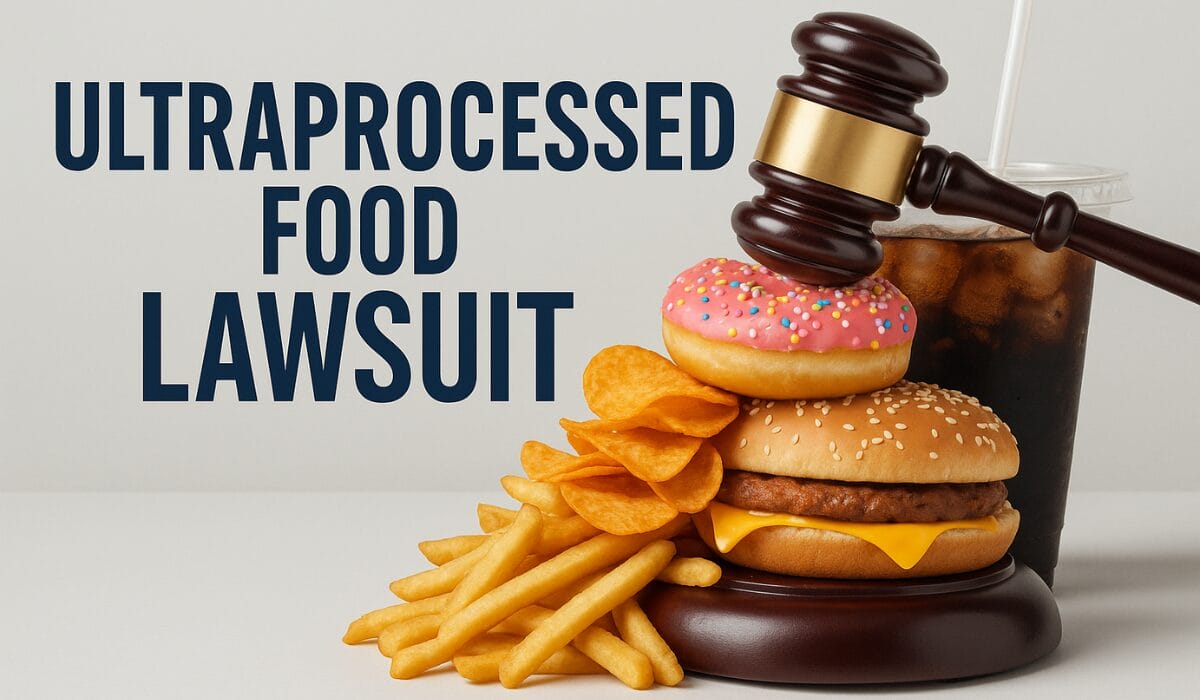Ultra-Processed Food Lawsuits Are Becoming the Next Mass Tort Frontier — Is Your Firm Ready?
A new front in product liability is gaining serious legal traction: ultra-processed food (UPF) litigation. The claims are explosive—alleging that major food conglomerates knowingly engineered addictive, harmful products and targeted them at children, contributing to rising rates of childhood Type 2 Diabetes and NAFLD/MASLD (Metabolic Dysfunction-Associated Steatotic Liver Disease).
At the April 2025 Mass Torts Made Perfect (MTMP) conference, plaintiff attorney Joseph Fantini summarized what many in attendance felt: “There was a lot of buzz about the ultra-processed food litigation.” That buzz has turned into litigation strategy and hard legal filings. And for law firms considering whether to jump in, the time to decide is now.
This article delivers a full breakdown for attorneys and legal marketers. We analyze the Martinez v. Kraft Heinz case, the science and legal theory behind UPF litigation, the coordinated Omnibus Motion to Dismiss, the procedural forecast, and the real opportunity for firms to scale their UPF caseloads quickly through performance-based acquisition.
The Martinez Case: How the UPF Litigation Wave Began
Filed in Philadelphia in December 2024, Bryce Martinez v. Kraft Heinz, et al. claims that Bryce, now 16, developed Type 2 Diabetes and MASLD as a result of years of consuming ultra-processed foods marketed and manufactured by dozens of major food corporations.
Key defendants include Kraft Heinz, Coca-Cola, PepsiCo, General Mills, Mars, Nestlé, Kellogg, and others. The case alleges:
- Addictive Design: UPFs were engineered to override satiety and create dependency, similar to Big Tobacco tactics.
- Predatory Child Marketing: Billions spent targeting children through cartoons, schools, and digital platforms.
- Failure to Warn: Internal documents suggest corporate knowledge dating back to at least 1999.
- Causation: Martinez’s consumption of UPFs is directly linked to his early chronic illness.
Why it matters: This isn’t just about food. It’s about whether a coordinated industry effort to market harmful, addictive products to children constitutes actionable corporate misconduct.
Defining UPFs: The Legal and Scientific Fault Line
Defendants’ first attack in the Omnibus Motion to Dismiss (MTD) was definitional. They argue:
- “Ultra-processed food” is vague, subjective, and lacks legal precedent.
- The plaintiff’s list of 110 brand names does not meet pleading specificity standards.
- Scientific studies only show correlation, not causation.
But the plaintiff relies on:
- The NOVA classification system, which defines UPFs by ingredients and processing.
- Robust epidemiological studies showing UPF links to:
- +15% risk of Type 2 Diabetes per 10% UPF intake increase
- Childhood obesity and NAFLD rates climbing in tandem with UPF consumption
- Possible addictive properties (dopamine triggers, brain reward systems)
Defendants’ Legal Strategy: Preemption, Delay, and Fracture
The March 2025 Omnibus Motion to Dismiss (Case 2:25-cv-00377) seeks early dismissal based on:
- Vagueness of the UPF concept
- Lack of product specificity in the complaint
- Insufficient causation allegations
- Preemption by USDA approval of food ingredients
“Defendants take issue with almost everything,” Fantini noted. They’re betting on procedural delay to slow momentum and fracture plaintiff leadership before an MDL can form.
Procedural Timeline: What to Expect
According to Fantini’s forecast:
- Plaintiff response to MTD: Due May 30, 2025
- Defense reply: Due July 14, 2025
- Oral arguments: Summer 2025
- Ruling: Early Fall 2025
If the MTD is not granted in full, expect:
- Plaintiff’s amended complaint by October 2025
- A second MTD from defendants
- Court ruling on second motion by early 2026
MDL formation could follow, depending on the volume and coordination of filings.
Mass tort readiness means anticipating multi-year litigation timelines, pretrial wrangling, and bellwether strategy well before trial.
This Litigation Is a Client Acquisition Opportunity—If You Move Early
This litigation isn’t speculative—it’s operational.
At Blue Sky Legal, we’ve already developed campaign frameworks to identify and acquire qualified UPF claimants. The right strategy is essential because not every case will meet criteria. Many won’t.
Common Qualification Criteria for UPF Leads:
- Diagnosed Type 2 Diabetes or NAFLD/MASLD before age 18
- Regular consumption of named UPF brands
- No dominant genetic or lifestyle counter-indicators
Our Solution:
- Non-Branded Campaigns: Target high-risk families through behavior-informed media
- Media-Agnostic Buying: Facebook, YouTube, radio, and affiliate networks
- Rigorous Pre-Qualification: 24/7 intake + signed retainers before delivery
- Transparent Cost-Per-Case Pricing: Pay only for qualified claimants
Our average cost-per-case for UPF-qualified signers is expected to stabilize between $2,800 and $3,600 depending on market and age segmentation.
Don’t Wait for the MDL—Start Building Now
By the time a UPF MDL is formed, top-tier leads will be expensive, and intake competition will be steep. Firms that wait may find themselves priced out.
Blue Sky Legal can help you:
- Launch a test campaign with 50–200 signed cases
- Identify ideal plaintiff profiles
- Scale quickly once procedural certainty increases
Ready to start a UPF docket? Contact us for a case volume forecast, target criteria, and media plan tailored to your region.
What’s Next for UPF Mass Torts
This is a rare opportunity for law firms to lead—not follow. The science is mounting, the legal theory is being tested, and a potential MDL is on the horizon.
But this mass tort is uniquely complex:
- Plaintiffs must define a legally valid product category.
- Science must bridge the gap between correlation and causation.
- Firms must operate intake with precision, or risk wasting resources on non-viable claims.
UPF litigation isn’t a volume game. It’s a quality game. That’s why we exist.


